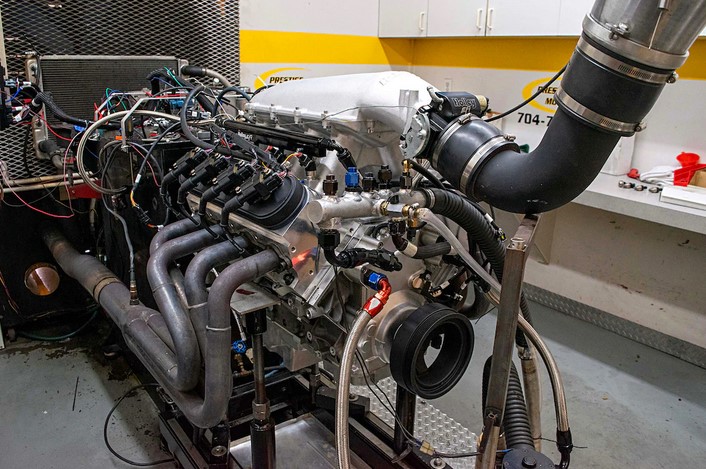
The LS3 intake manifold is a popular choice for performance enthusiasts looking to get the most out of their engine. It is a great platform for porting and performance enhancements, as it offers a great starting point for increased power and torque. Porting the LS3 intake manifold can help to improve airflow, reduce turbulence, and increase overall engine performance. With the right porting and performance enhancements, the LS3 intake manifold can be transformed into a powerful and efficient piece of equipment. This article will discuss the benefits of porting and performance enhancements for the LS3 intake manifold, as well as the tools and techniques needed to get the job done.
Exploring the Benefits of Porting an LS3 Intake Manifold: How to Maximize Performance and Efficiency
The LS3 intake manifold is a popular choice for those looking to maximize performance and efficiency in their engine. It is a direct replacement for the factory-installed LS2 intake manifold, and offers a number of advantages over its predecessor. In this article, we will explore the benefits of porting an LS3 intake manifold and how to maximize performance and efficiency.
The LS3 intake manifold is designed to provide improved airflow and increased power. It features larger runners and a larger plenum area, which allows for more air to be drawn into the engine. This increased airflow results in improved engine performance and efficiency. Additionally, the LS3 intake manifold is designed to reduce turbulence and improve air/fuel mixture distribution, resulting in improved combustion and increased power.
Porting an LS3 intake manifold can further improve performance and efficiency. Porting involves enlarging the intake runners and plenum area, which allows for even more air to be drawn into the engine. This increased airflow results in improved engine performance and efficiency. Additionally, porting can reduce turbulence and improve air/fuel mixture distribution, resulting in improved combustion and increased power.
When porting an LS3 intake manifold, it is important to ensure that the porting is done correctly. Improper porting can lead to decreased performance and efficiency. It is also important to ensure that the porting is done in a way that does not compromise the integrity of the manifold.
In order to maximize performance and efficiency when porting an LS3 intake manifold, it is important to use the correct tools and techniques. It is also important to use the correct materials and coatings to ensure that the porting is done correctly and that the manifold is not compromised. Additionally, it is important to ensure that the porting is done in a way that does not compromise the integrity of the manifold.
In conclusion, porting an LS3 intake manifold can provide improved performance and efficiency. It is important to ensure that the porting is done correctly and that the correct materials and coatings are used. Additionally, it is important to ensure that the porting is done in a way that does not compromise the integrity of the manifold. By following these guidelines, you can maximize performance and efficiency when porting an LS3 intake manifold.
Understanding the Different Types of Porting for LS3 Intake Manifolds: Which is Right for Your Vehicle?
When it comes to LS3 intake manifolds, there are several different types of porting available. Each type of porting has its own advantages and disadvantages, and it is important to understand the differences between them in order to choose the right one for your vehicle.
The first type of porting is called “as-cast” porting. This type of porting is the most basic and involves simply smoothing out the rough edges of the intake manifold. This type of porting is best suited for vehicles that are not heavily modified and are running stock components. As-cast porting is also the least expensive option, making it a great choice for those on a budget.
The second type of porting is called “CNC porting”. This type of porting involves using a computer-controlled machine to precisely cut and shape the intake manifold. This type of porting is more expensive than as-cast porting, but it offers more precise control over the shape and size of the ports. CNC porting is best suited for vehicles that are heavily modified and running aftermarket components.
The third type of porting is called “flow-bench porting”. This type of porting involves using a flow bench to measure the air flow through the intake manifold. This type of porting is the most expensive option, but it offers the most precise control over the shape and size of the ports. Flow-bench porting is best suited for vehicles that are heavily modified and running aftermarket components.
When choosing the right type of porting for your vehicle, it is important to consider your budget, the modifications you have made to your vehicle, and the type of performance you are looking for. As-cast porting is the least expensive option and is best suited for vehicles that are not heavily modified and are running stock components. CNC porting is more expensive but offers more precise control over the shape and size of the ports. Flow-bench porting is the most expensive option but offers the most precise control over the shape and size of the ports.
No matter which type of porting you choose, it is important to make sure that you are working with a reputable shop that has experience with LS3 intake manifolds. This will ensure that your porting job is done correctly and that you get the best performance out of your vehicle.The LS3 intake manifold is a great choice for those looking to increase the performance of their engine. With the right porting and performance enhancements, the LS3 intake manifold can provide a significant boost in power and torque. The porting process can be done by a professional or by the owner, depending on their level of experience. With the right modifications, the LS3 intake manifold can provide a great performance boost for any engine.